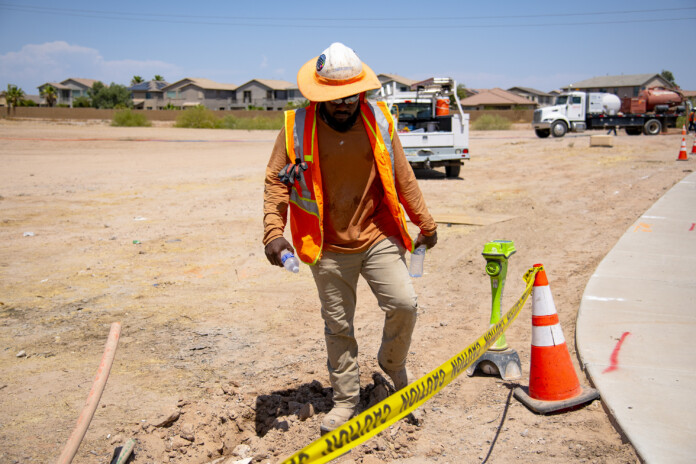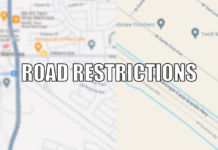
 For each person who died from heat this summer, an extraordinary number survived it.
For each person who died from heat this summer, an extraordinary number survived it.
It’s just after lunchtime on July 26, nearly a month into the record-topping excessive heat warning.
With my recent stories about heat deaths still fresh in my mind, I spotted a construction crew working just off Smith-Enke Road. Heat emanating from the blacktop distorted the workers as I pulled over to chat with them.
To call a sunny afternoon in Arizona “hot” is a dire understatement. My skin burned walking the short distance from my car to the worksite, and I could already feel sweat trickle down my back upon making my introduction.
The crew, however, had been toiling for more than eight hours, drilling to install fiber-optic cables in one of Maricopa’s many soon-to-be-not-vacant lots.
I spoke with Corey Triplett, a supervisor with six years of construction work under his belt. We stood in the sun as he talked about how he always enjoyed getting his hands dirty and working outdoors, even amid a seemingly unending heatwave.
“People think it’s easy. But it’s not,” Triplett said. “It’s not easy working out here in the summer. You might be working in the heat 10, 12 hours a day just to get a job done.”
It was less than two minutes into my interview when my iPhone displays a warning message — it overheated. I couldn’t tell if it was still recording, but I continued talking with Triplett about working long hours in the summer.
“You try to sneak some shade if you can, but mostly just stay hydrated,” he said. “It’s rough, especially this summer.”
While describing how he prepares for each day and keeps his crew safe (by continuously providing water and electrolyte packets and taking breaks in the air-conditioned work truck) my iPhone stopped recording and powered itself down despite ample battery charge.
A moment later, drill operator Dakota Hatch made a hand motion.
“We have a guy cramping up here,” Triplett said. He left to fetch a water bottle and electrolyte packet from the truck.
Hatch, seated under an umbrella next to the drill, complained of leg pain.
![Drill operator Dakota Hatch takes a bottled water and bag of electrolytes from supervisor Triplett. [Monica D. Spencer]](https://www.inmaricopa.com/wp-content/uploads/2023/08/mdspencer-072623-working-heat-construction-04-600x400.jpg)
I think back to one of the first heat-related deaths reported in Pinal County this year: A 57-year-old Hispanic man who succumbed to heart problems exacerbated by physical exertion and, of course, the heat.
That man likely experienced those same cramps as fatigue, excessive sweating and dizziness. How long did it last before he became confused and unresponsive?
He died June 21 at noon, when the high had not yet reached 104 degrees.
After Triplett supplied Hatch bottled water and a packet of electrolytes, I was left with one question: Is the risk worth it?
“I mean, you gotta think, ‘Who are you out here working for?’” Triplett asked. “I have a little girl at home I have to try to provide for. That’s my wheel that keeps me motivated. That’s what keeps me pushing because I’ve got to feed my family.”
This story was first published as part of the heat safety package in the September edition of InMaricopa Magazine.






![City gave new manager big low-interest home loan City Manager Ben Bitter speaks during a Chamber of Commerce event at Global Water Resources on April 11, 2024. Bitter discussed the current state of economic development in Maricopa, as well as hinting at lowering property tax rates again. [Monica D. Spencer]](https://www.inmaricopa.com/wp-content/uploads/2024/04/spencer-041124-ben-bitter-chamber-property-taxes-web-218x150.jpg)

![3 things to know about the new city budget Vice Mayor Amber Liermann and Councilmember Eric Goettl review parts of the city's 2024 operational budget with Mayor Nancy Smith on April 24, 2024. [Monica D. Spencer]](https://www.inmaricopa.com/wp-content/uploads/2024/04/spencer-042424-preliminary-budget-meeting-web-218x150.jpg)



![Alleged car thief released without charges Phoenix police stop a stolen vehicle on April 20, 2024. [Facebook]](https://www.inmaricopa.com/wp-content/uploads/2024/04/IMG_5040-218x150.jpg)




